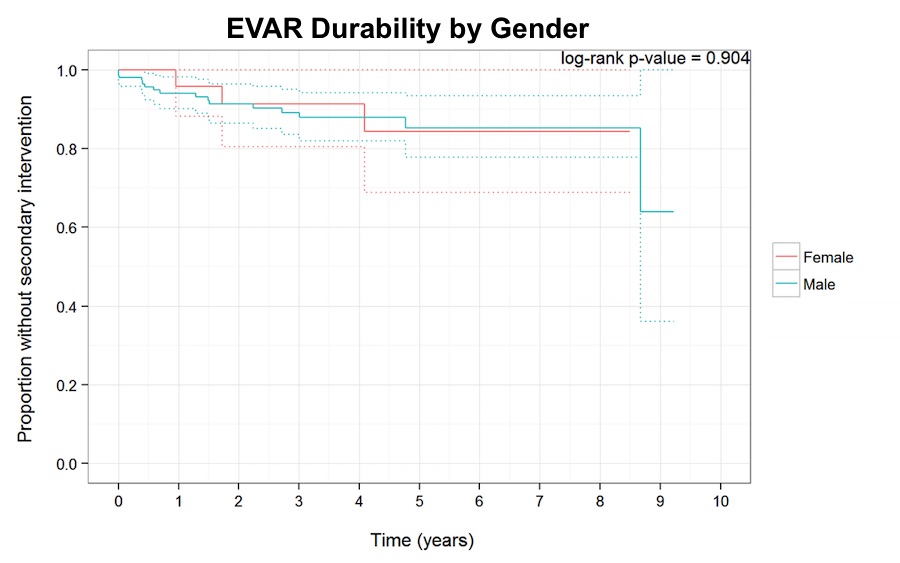Back to 2016 Annual Symposium ePosters
Gender differences in outcomes after endovascular aneurysm repair (EVAR)
Connie Truong, BS, Nathan Kugler, MD, Peter J. Rossi, MD, Kellie R. Brown, MD, Brian D. Lewis, MD, Gary R. Seabrook, MD, Cheong Jun Lee, MD.
Medical College of Wisconsin, Milwaukee, WI, USA.
OBJECTIVES:
Previous studies have shown that women derive less benefit from EVAR compared to men due to higher incidence of difficult neck anatomy and smaller access vessels. In recent years, EVAR stent graft construction has become increasingly lower-profile and conformable to accommodate more difficult anatomy. This study examines whether the differences in outcomes between genders are less apparent with current EVAR technology.
METHODS:
An IRB-approved retrospective chart review was performed on patients who underwent elective EVAR procedures between 2005 and 2013. Operative outcomes including morbidity, mortality, and overall EVAR durability based on the incidence of unplanned graft-related secondary interventions (SI) (i.e., open conversion, proximal or distal extensions, and coil embolization) were collected.
RESULTS:
181 patients met the study inclusion criteria: 150 males and 31 females. Median follow-up was 40.3 months. Higher rates of unplanned intraoperative interventions were performed in women, mostly access-site related, compared to men (42% vs 21%, p = 0.022). There was no difference between genders in perioperative mortality. The overall durability of EVAR extrapolated as time to secondary intervention (SI) was 91% at 2 years and 85% at 5 years (see figure). There was no difference in long-term durability and mortality between genders. Severe iliac artery tortuosity (HR 4.8, p < 0.05) and aortic neck angle greater than 60 degrees (HR 4.7, p = 0.022) were predictors of SI. Women were found to have statistically significant iliac artery tortuosity (p < 0.001) and smaller iliac artery diameters (p < 0.001). Surprisingly, COPD (HR 0.13, p <0.05) and current smoking status (HR 0.26, p =0.012) were seemingly protective factors for SI following EVAR.
CONCLUSIONS:
Though women had more unplanned intraoperative interventions and expected more hostile anatomy, the overall long-term durability of EVAR is similar between genders. EVAR durability is significantly dependent on the severity of iliac tortuosity and aortic neck angulation. Continued improvements in EVAR devices are necessary since differences in gender outcomes are still significant in the periprocedural period.

Back to 2016 Annual Symposium ePosters
|







